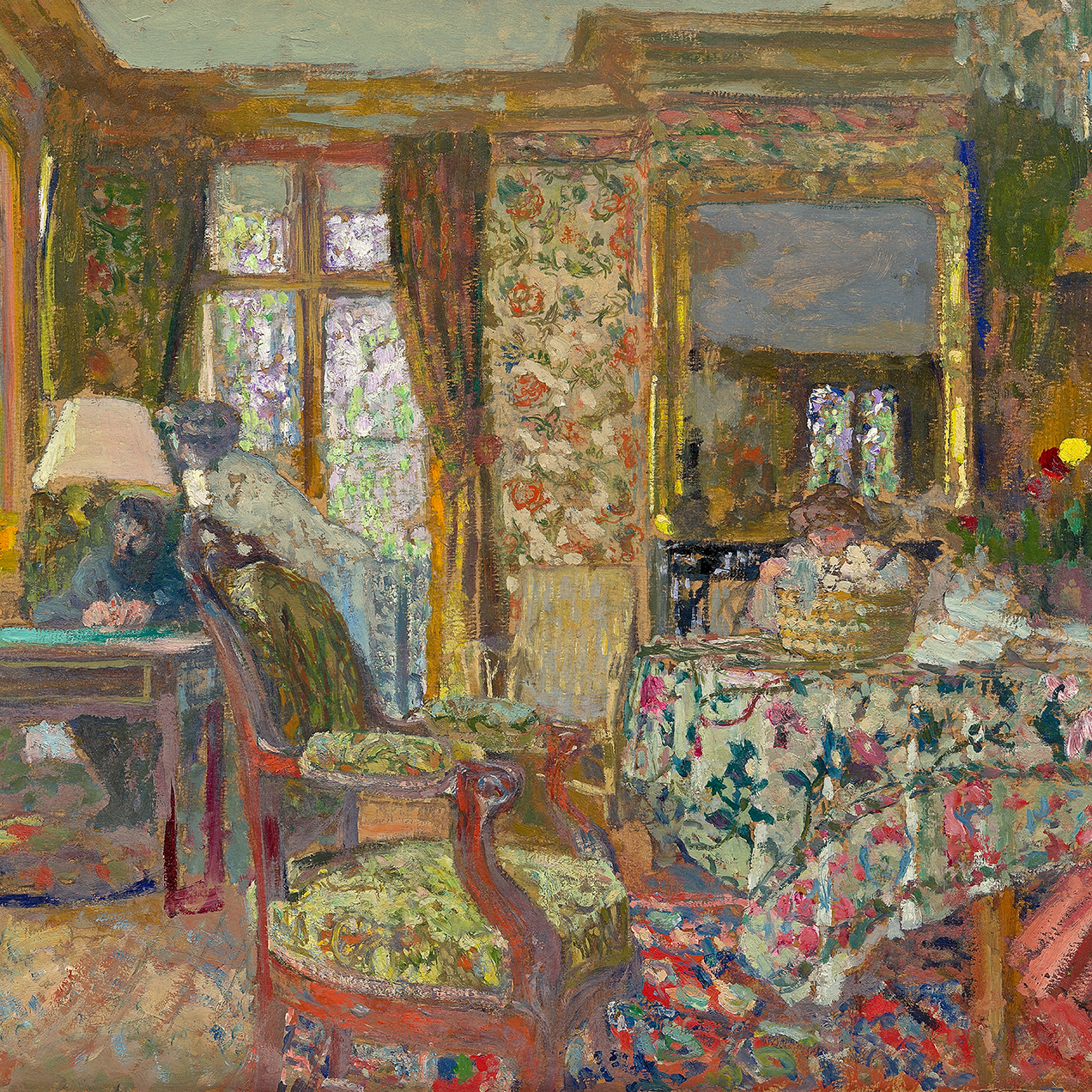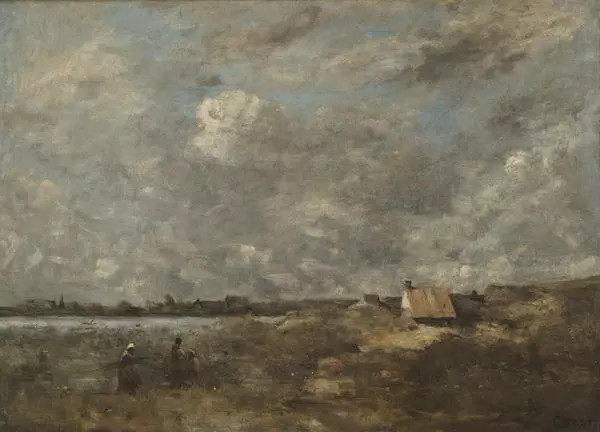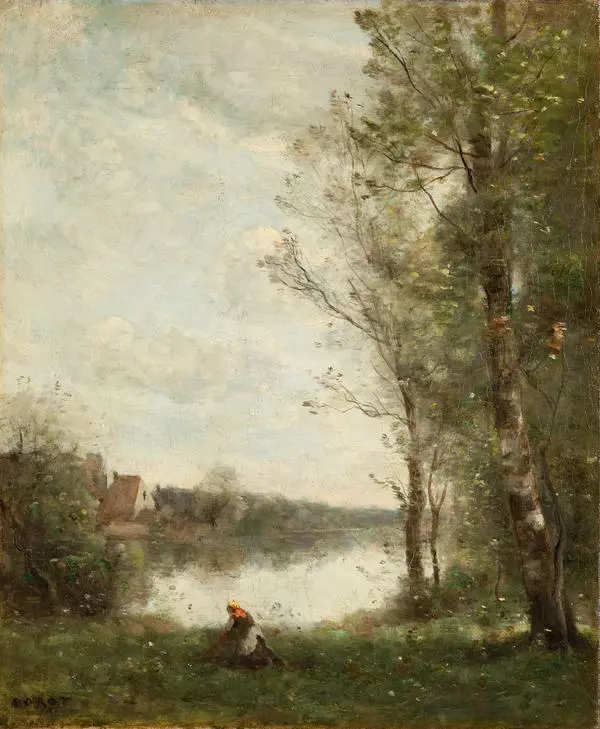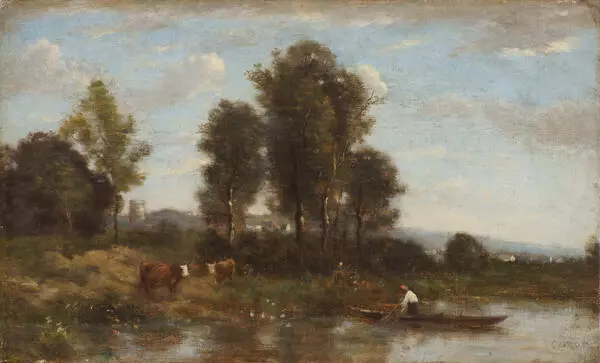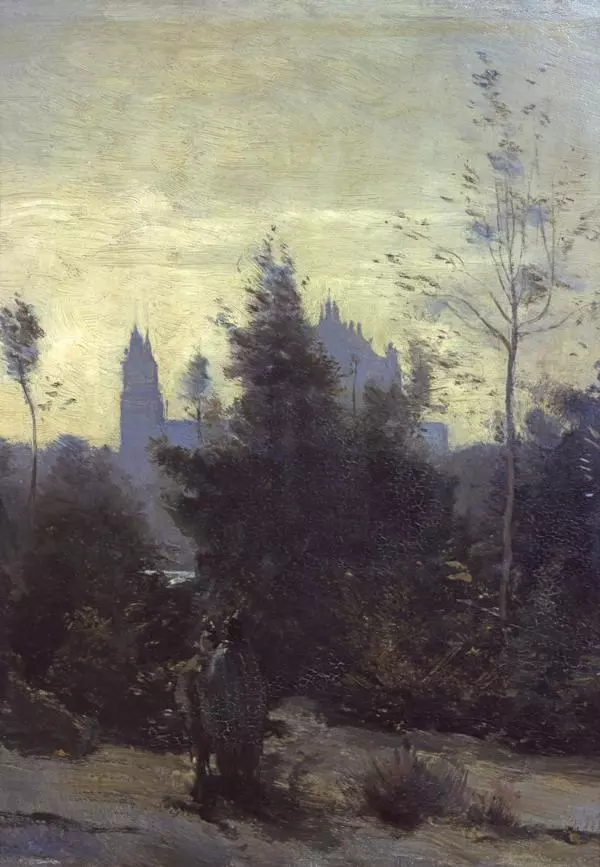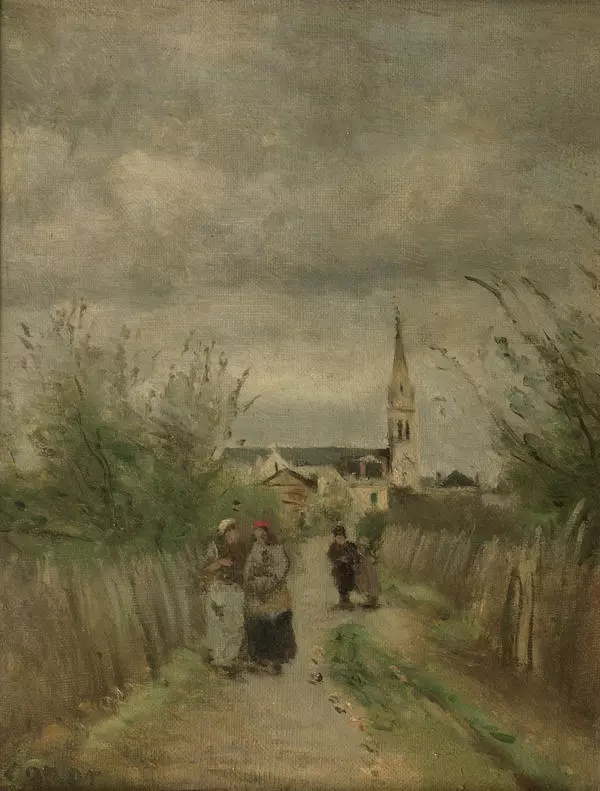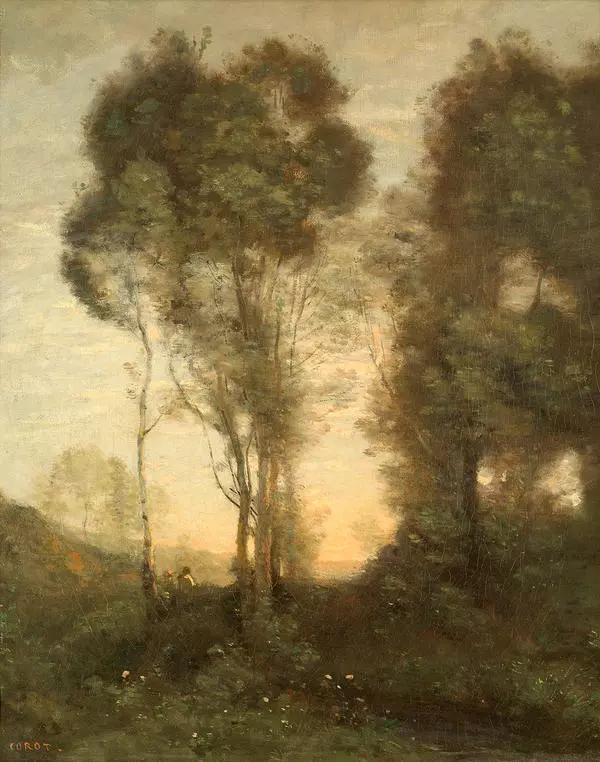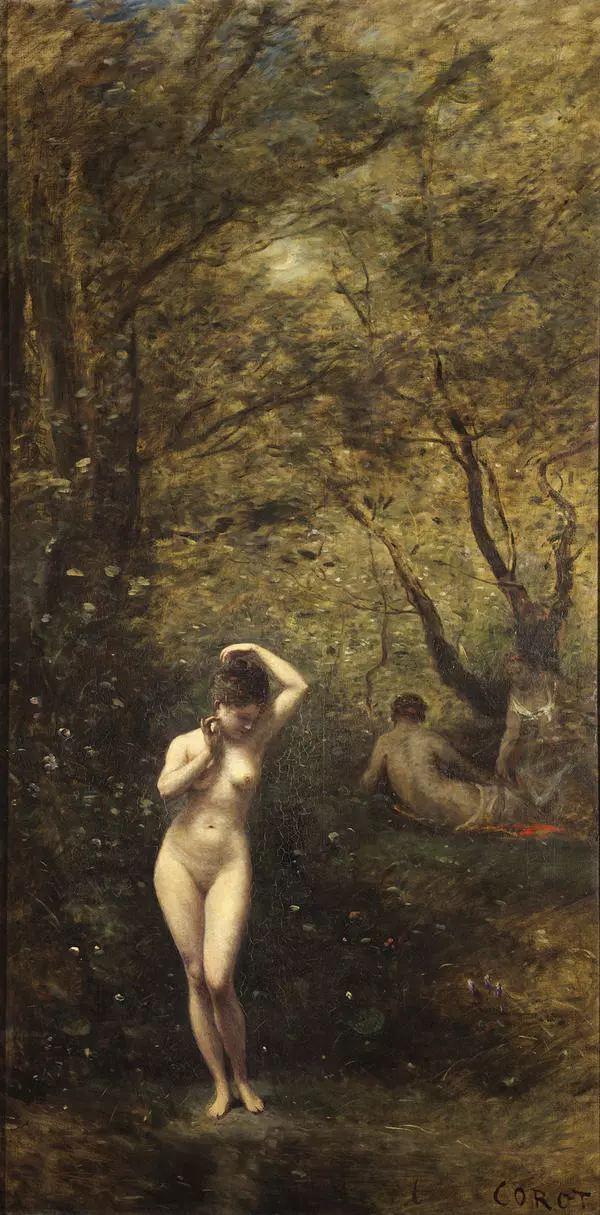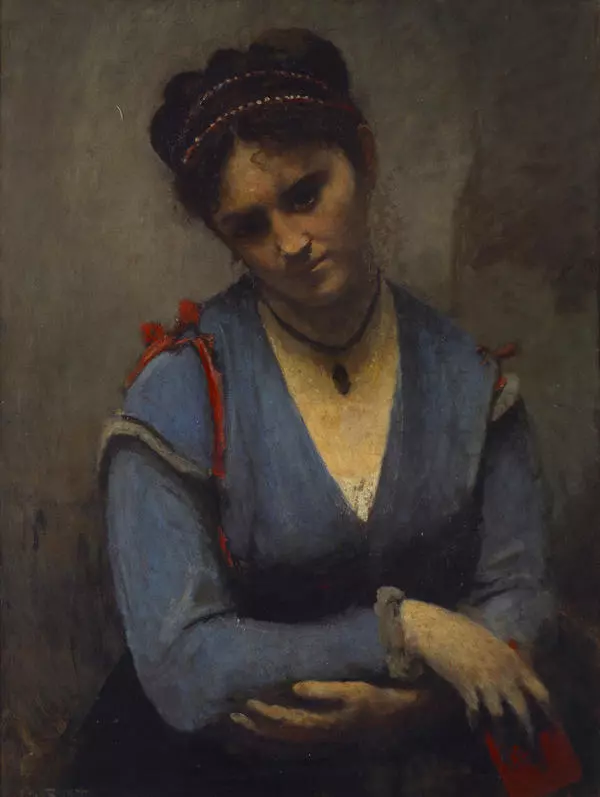Corot discovers the subtle beauty of his own surroundings. The artist became the creator of a special type of landscape known as the “mood landscape.” It utilized his fine lyricism and attention to the slightest changes in nature.
Corot’s classical style developed in the 1840s in France. He did a lot of painting out in nature, but he always finished his works in the studio. Nature comes across poeticized in his work, transformed by the artist’s lyrical perception. “I want to convey the trembling of nature, " Corot said. The painting Hay Stack belongs to the golden age of the artist’s creative work. Corot exquisitely captures the slightest hints of change in nature. The road has not yet dried after the rain, and the trees have not shaken off their water droplets, but then a wind blows, blue sky breaks through the gray clouds, and a sunbeam lands on the grass. Corot communicates the variable life of nature with the greatest precision using light, vibrant brush strokes. His color range seems limited. It is a gradation of gold-brown, greenish-blue, and silvery gray hues, but the artist creates a unique harmony from these close color splashes with varied illumination. Camille Corot used the term “values” to describe the finest transitions of hues within one color. Their reciprocal combinations, fusing into a unified color array, and the variability of illumination allowed the artist to depict a wide variety of impressions in the perception of landscape motifs.Hay Stack
Creation period
1865 – 1870
Dimensions
32x45 cm
32х45
32х45
Technique
oil on canvas
Collection
Exhibition
8
Open in app#1
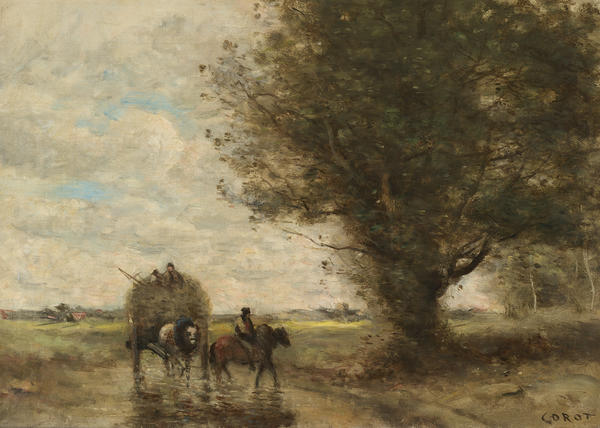
Camille Corot
Hay Stack (Cart Wagon Crossing the Ford)
#2
read morehide
00:00
00:00
1x
Hay Stack
Creation period
1865 – 1870
Dimensions
32x45 cm
32х45
32х45
Technique
oil on canvas
Collection
Exhibition
8
Open in app
Share

